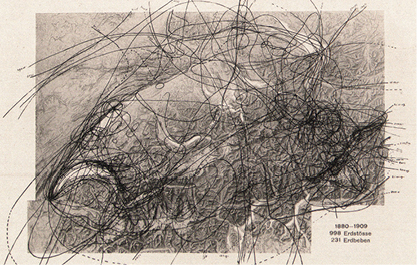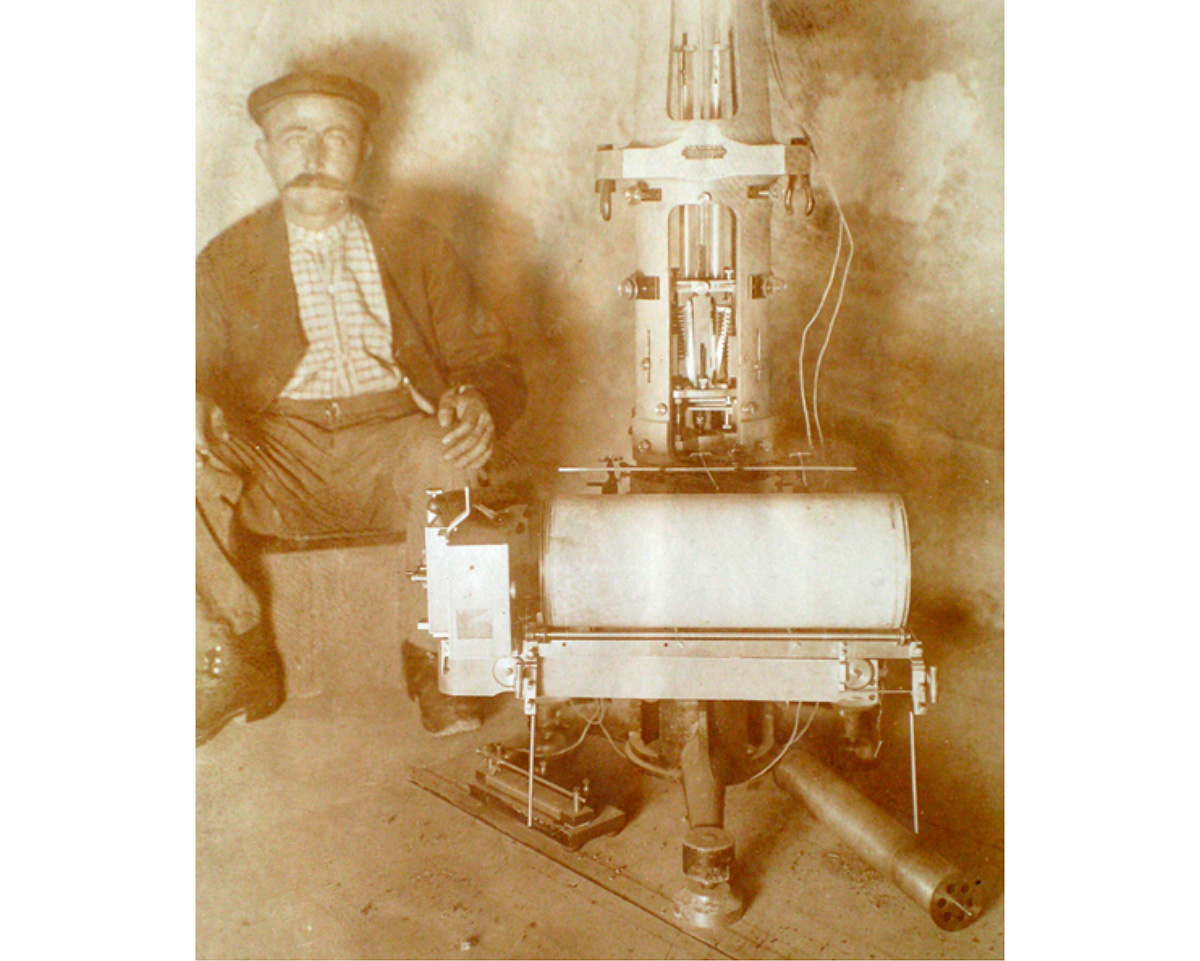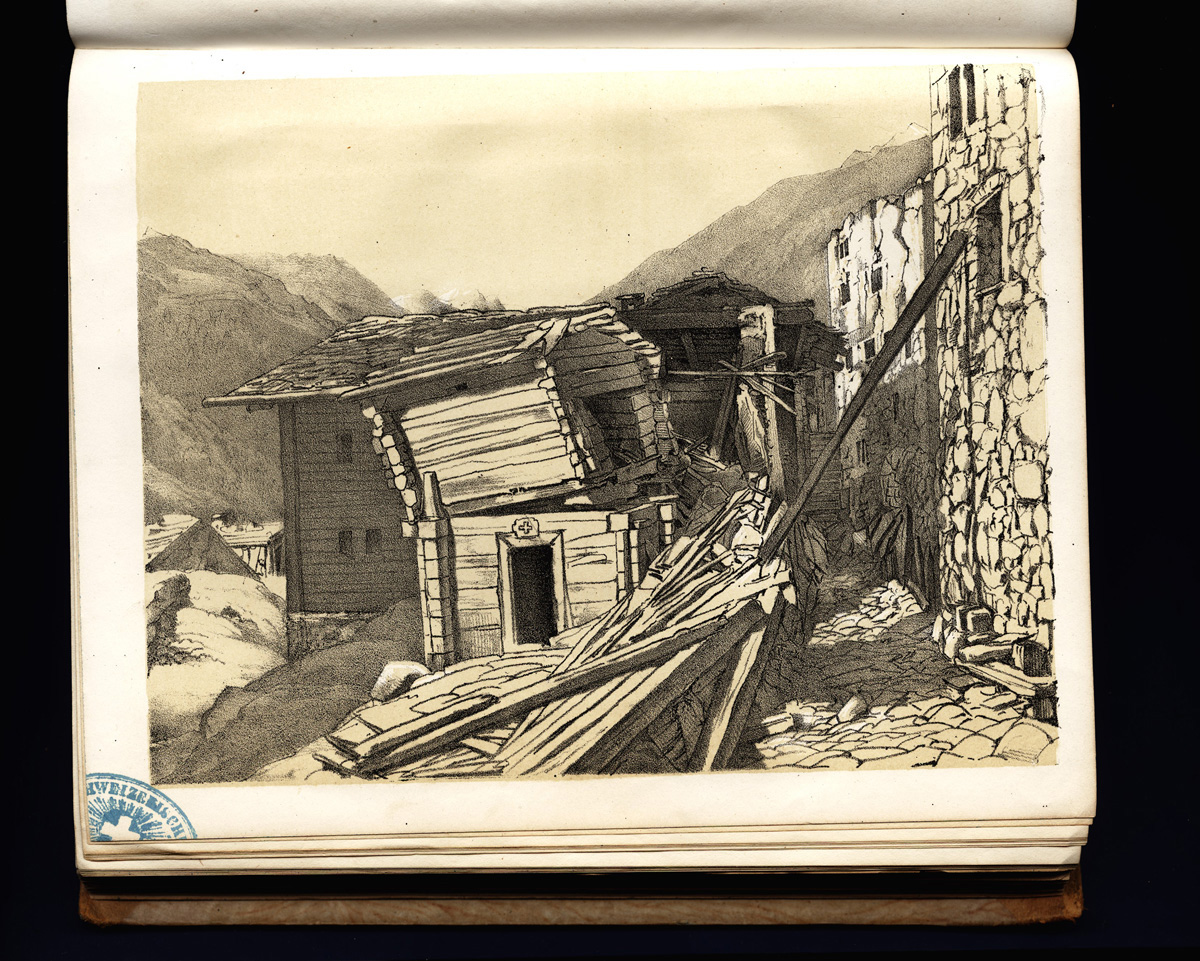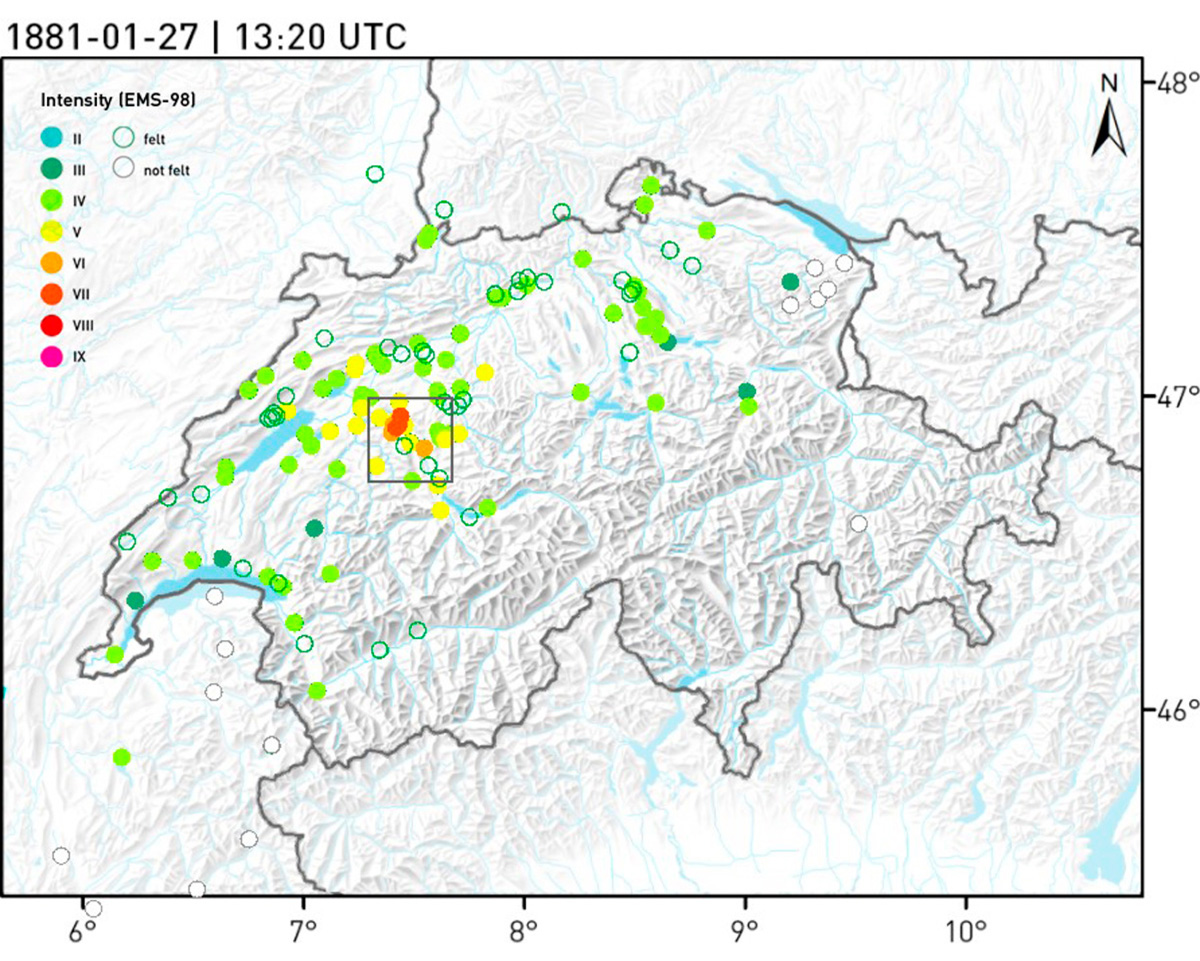Historical Seismology & Paleoseismology
Data on earlier earthquakes provide important information for anticipatory mitigation measures and enable us to pinpoint where events occurred and estimate their magnitude. Damaging powerful earthquakes are relatively rare in Switzerland, so no instrumental data on them are available yet. Consequently, we have to draw on chronicles from the past, analyse this information using historical methods, and use palaeoseismological methods to interpret geological traces of major earthquakes.
Illustration: An earthquake map of Switzerland (1880–1909) drawn in 1911 by Johann Jakob Früh, who chaired the Swiss Earthquake Commission at the time.

Reconstructing Past Earthquakes
Reconstructing past earthquakes is not merely of historical interest, because the knowledge gained from this work serves provides a useful basis for assessing the seismic hazard faced by a region and, to cite but one example, provides useful input on the amplification of earth tremors caused by the nature of the local geological underground.
In 1999, the Swiss Seismological Service (SED) set up the sub-discipline 'historical seismology' to verify the reliability of information stemming from historical descriptions of earthquakes. Since then, a multidisciplinary effort by historians, seismologists and database experts has produced a first, revised, critical-historical earthquake catalogue (the current version being ECOS-09), an associated database for macroseismic analysis and detailed documentation. The first step involves scouring historical documents (chronicles, official documents, diaries, newspaper articles, scientific treaties, etc.) to gather accounts of earthquakes and descriptions of the damage they caused. When subjected to source-critical analysis, this information can be translated into site-specific intensity points using the European Macroseismic Scale (EMS-98). By applying a statistical method calibrated against recent earthquakes, identified intensity fields can be used to pinpoint the location, hypocentral depth and magnitude of earthquakes with considerable accuracy.
Palaeoseismologists examine geological structures that can be caused by strong earth tremors, such as evidence of earthquake-induced mass wasting or tsunamis (seismic sea waves), landslides in mountainous areas, fault structures visible at the surface and damage caused to stalactites and stalagmites in caves. Palaeoseismological methods enable us to piece together a considerably longer time series for the frequency of very strong earthquakes than could be produced from instrumental data and historical observations alone.
A Multidisciplinary Approach
A decisive factor for ensuring that information from various sources on a specific period is interpreted as accurately as possible is that it is produced using historical methods and viewed against the backdrop of its sociocultural context. Lying on the border between science and the humanities, analysing how earthquake data are produced is also of interest to researchers in other areas, including the history of knowledge, environmental history and the sociology of risk.
Palaeoseismic studies apply geological and geophysical methods. Since the interpretation of such ancient traces is never clear-cut, they are dated as accurately as possible (e.g. using the carbon-14 method) and then considered alongside other observations. An earthquake hypothesis is only posited if separate traces can be shown to have resulted from activity that occurred in the same era and overall area.
Results and Future Prospects
The most recent update of the historical critical review of the Earthquake Catalogue of Switzerland (ECOS-09) focussed primarily on the period from 1000 to 1878. There have also been detailed case studies of the most powerful and damaging earthquakes of the twentieth century (Sierre in 1946 and Sarnen in the canton of Obwalden in 1964). At the time of writing, as part of a multidisciplinary National Fund project, we were studying medium-strength earthquakes that occurred in the pre-instrumental and early instrumental eras of earthquake monitoring in Switzerland (1878-1974). Since such quakes are relatively common in Switzerland, this period saw a strong increase in the quantity of viable source data produced, leaving us a very rich corpus of information.
Although palaeoseismological work is conducted at a number of universities, evidence of earthquakes in prehistory is often only a by-product of research. Consequently, our efforts focus on systematically sifting through the evidence and structuring data in a homogeneous way, using the approach already applied to historical earthquakes. This enables a joint interpretation of an originally heterogeneous dataset and unearths new findings about the magnitude and location of very large prehistoric earthquakes.


